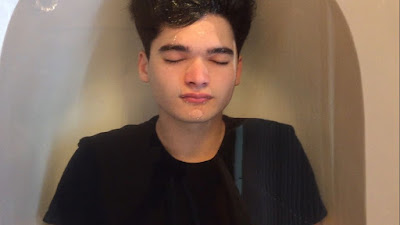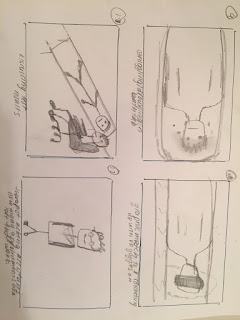Alright, so I'm looking into some conventions common within Sci-Fi genres, thriller genres, and psychological thrillers. While I think the psychological aspect will be key in conveying a type of fear or loss after the technology is removed from the world of the main character, it is also important to consider how science-fiction thrillers are successful. Take Christopher Nolans "Inception" for example. The movie incorporates all three genres seamlessly to create a jarring yet emotionally reflective piece. In short, living up to or even being able to stand in the shadow of a movie like "Inception" will be incredibly difficult but let's delve into some Sci-Fi thriller conventions and ideas for how my piece will work with them to create something, hopefully, original.
Sound As in all films, sound is essential to pacing. One of the best examples of capturing this "psychosis" or angle I'm looking for is in the Black Mirror episode "The Entire History of You"
this excerpt (45:10 to 47:30) blends perfectly paced music with diegetic sound to allow the viewer extreme focus on the image. Each action is punctuated with clear diegetic sound but also a shift in the undertone of the music. Some non-diegetic sound is used to punctuate the use of technology (which will be easier to incorporate in my piece as the only technology used will have diegetic sound. but the melancholy tone of the music overall signified the internal turmoil of the main character as well as the passing of time. Music choice will be no easy task due to the extremely precise pacing of psychological thrillers (i.e. jump cuts and faster cuts).
Setting The setting of a sci-fi thriller has to appeal to both genre types and match the tone of the film. Sci-fi is mainly associated with other worlds, space, or different points in time. A great example of this setting is in the film "Blade Runner" which is set in a dark, gritty version of the future. This fits the film's tone perfectly and allows the storytelling to shine through and captivate the viewer. A more grounded sci-fi thriller will be set in a more average and believable location and time period in order to fit the story that the film is trying to tell. The latter is true for my piece which will make filming much more practical. The choice to go present-day seems more fitting to my theme in order to make the viewer relate as easily as possible.
Props Props are used to convince the audience of the time period and setting of the film. They usually reflect character backgrounds, hobbies or habits. For the direction of my short film props are essential specifically, technology. For example, the unassuming nature of Apple products would allow the audience to easily relate to the main character and work to transpose the emotions of the main character onto the audience.
Clothing Clothing is important in revealing the characters background in a piece to the audience. The characters social class and status is shown to us by the quality of the clothing. In "Shutter Island" the main character is dressed as a stereotypical detective with long trench coats, hats, and badges. Conversely in "District 9" the audience is shown characters dressed in bulletproof clothing and soldier uniforms making the occupation and condition of the characters obvious. For the purposes of my piece, the character would most likely be dress in middle-to-high-end clothing such as jeans and a sweater etc. The more unassuming the clothing, the more easily the audience can sympathize with the main character's emotions.
Main Character The main character varies drastically between genres however, when creating the main character one must consider time period, location, and character backstory. In Psychological-thrillers the main character drives tone as well as the plot of the film. In thrillers the main character usually starts out with the same knowledge of the main character to best create suspense and take the viewer on "a journey" with the main character. When I envision my main character I see him as one of my close friends so I think my vision of the character and the setting is shaped around him which makes his backstory easier-- typical teenage guy immersed in media etc. The real challenge here will be the strength of the acting as it is not easy to accurately portray psychosis.
The Crisis The Crisis of the film is dependent on the genre of the film. A horror film will tend to feature a murder, a romance film will feature a relationship and so on, The crisis of a sci-fi thriller will typically include some themes that are out of the ordinary that the main character needs to attempt to overcome. Sci-fi element would include time-travel, space, or other science fiction features. The thriller aspect should result in a tense story that may play with the audience by adding twists to the story. The crisis in my story is defenitely having a technology stimulant taken away but I think there needs to be a good twist -- a suicide? Is that morbid? Maybe. It would hold a powerful message on how deeply we depend on technology to "stay sane."































